#Spanish colony
Explore tagged Tumblr posts
Text

Cuban Social vol IX nr. 5 (mayo 1924) Srta. Mercedes Madrazo, una de las más bellas jeunne-filles del mundo elegante habanero, hija del señor Francisco de Diego Madrazo, miembro prominente de la Colonia Española. (Fot. Taponier, París)
#cuban colony#colonial cuba#spanish#spain#spanish colony#colonia espanola#colonia#colony#history#cuba#cuban#cubans#Madrazo#Mercedes Madrazo
1 note
·
View note
Text


"Am I a joke to you?"
#black sails#memes#urca de lima#1715 treasure fleet#captain flint#james flint#james mcgraw#treasure island#starz#piratecore#pirates#pirate captain#treasure#treasure fleet#spanish treasure galleon#spanish treasure#spanish florida#florida#history#floridian history#american history#us history#colonial history#funny#archaeology
554 notes
·
View notes
Text
The Spanish surnames of many Filipinos have often misled foreigners here and abroad, who are unaware of the decree on the adoption of surnames issued by Governor-General Narciso Clavería in 1849. Until quite recently in the United States, the Filipinos were classified in demographic statistics as a “Spanish-speaking minority,” along with Puerto Ricans, Cubans, Mexicans, and other nationals of the Central or South American republics. The Philippines, as is well known, was a Spanish colony when Spain was mistress of empires in the Western Hemisphere; but the Americans were “hispanized” demographically, culturally, and linguistically, in a way the Philippines never was. Yet the Spanish surnames of the Filipinos today—García, Gómez, Gutiérrez, Fernández—seem to confirm the impression of the American statistician, as well as of the American tourist, that the Philippines is just another Mexico in Asia. Nor is this misunderstanding confined to the United States; most Spaniards still tend to think of “las Islas Filipinas” as a country united to them through the language of Cervantes, and they catalogue Philippine studies under “Hispano-America.” The fact is that after nearly three-and-a-half centuries of Spanish rule probably not more than one Filipino in ten spoke Spanish, and today scarcely one in fifty does. Still the illusion lives on, thanks in large part to these surnames, which apparently reflect descent from ancient Peninsular forbears, but in reality often date back no farther than this decree of 1849.
Somehow overlooked, this decree, with the Catálogo Alfabético de Apellidos which accompanied it, accounts for another curiousity which often intrigues both Filipinos and foreign visitors alike, namely, that there are towns in which all the surnames of the people begin with the same letter. This is easily verifiable today in many parts of the country. For example, in the Bikol region, the entire alphabet is laid out like a garland over the provinces of Albay, Sorsogon, and Catanduanes which in 1849 belonged to the single jurisdiction of Albay. Beginning with A at the provincial capital, the letters B and C mark the towns along the coast beyond Tabaco to Tiwi. We return and trace along the coast of Sorsogon the letters E to L; then starting down the Iraya Valley at Daraga with M, we stop with S to Polangui and Libon, and finish the alphabet with a quick tour around the island of Catan-duanes. Today’s lists of municipal officials, memorials to local heroes, even business or telephone directories, also show that towns where family names begin with a single letter are not uncommon. In as, for example, the letter R is so prevalent that besides the Roas, Reburianos, Rebajantes, etc., some claim with tongue in cheek that the town also produced Romuáldez, Rizal, and Roosevelt!
Excerpt from the 1973 introduction to Catálogo de Alfabético de Apellidos by Domingo Abella
1K notes
·
View notes
Text
Purelily filipino AU because lily in a filipiniana was calling out to me
Song is Araw-araw by Ben&Ben
#purelily#crk#white lily cookie#pure vanilla cookie#cookie run kingdom#filipino AU#all the traditional wear from the spanish colonization era ate#like fuck colonialism but also thank you for the dresses#cookie run#crk fanart#anime amv#amv#lyric video#lyric edit
158 notes
·
View notes
Text
Just an odd thought that I’m wondering if people are in the same boat about:
#i 100% Think my two blorbos would tolerate me at best.#poll#historical#napoleonic wars#history#general history#naval history#habsburg history#russian history#military history#european history#french history#medical history#tudor history#american history#danish history#Italian history#british history#roman history#colonial history#frevblr#French Revolution#Dutch history#Spanish history#portuguese history#Japanese history#Chinese history#Korean history#cold war era#cold war history
140 notes
·
View notes
Text


1918 Pueblo style Spanish Colonial estate in Santa Fe, NM has 8bds, 12ba, 10,098 sq ft, was reduced from $17.9m to $15.5m and it comes with GIGANTIC statuary.


Look at the size of them.

Oversized front door opens to a hall with a lovely sculpted giant niche.


Beautiful sitting room. But, look at all the perfectly curated furnishings.

The dining room can accommodate a much larger table.



The kitchen is beautiful. I love the color of the cabinetry.

Lovely home office. Look at the alcoves.

The huge primary bedroom is next to the office. There's also a door to the garden.


Beautifully tiled en-suite has a tub that looks like a giant clay pot.


Huge family room has a loft above.

There's a giant statue in here.

Up here there's a nice library area.

Another lovely bedroom with a Pueblo fireplace.

This one is so pretty. Love the twig bed.

Beautiful courtyard.

There's also a patio with a fountain.

Here's a casita on the property, too.



What guest would mind staying here?


And, it has 2 large bedrooms.

Gorgeous home on 2.21 acres of impeccably landscaped gardens.
https://www.trulia.com/home/503-camino-del-monte-sol-santa-fe-nm-87505-6823284
97 notes
·
View notes
Text

Fenecia - Wilbur Cruce Mission Horse Mare
63 notes
·
View notes
Text
Jay just posted a video talking about how he was recognized in El Nuevo Día, one of the biggest publications in Puerto Rico, and I HAVE to put this thought out there I have been holding onto it for so long-
Imagine Odysseus dancing with “Penelope” to Baile Inolvidable by Bad Bunny. Imagine him thinking about her and manifesting this vision of his wife that he spins around with, a wife he can’t hold in his arms because he’s lost at sea. Imagine him for yearning for one last dance with her, wondering if he’s ever going to make it home. Pensaba que contigo iba a envejecer/I thought I’d grow old with you.
Imagine Ody whispering to himself, “Si me ven solo y triste, soy culpable/If you see me alone and crying, it’s my fault”
Imagine Ody clutching nothing but open air, wishing it was Penelope instead. Tu me enseñaste a querer. Me enseñaste a bailar/You taught me how to love. You taught me how to dance.
I know it falls apart at some points because the song is about a breakup/ex but it’s just SUCH A GORGEOUS SONG??? And ofc Jorge Rivera-Herrans is our beautiful Boricua king and I fucking love salsa so much and ahhhhhhhhh. I was holding onto this idea because I was hoping to one day choreograph a dance or maybe take a shot at doing an animatic but FUCK IT I need to see this happen, please someone more talented than me make it happen 😭😭😭
#epic the musical#epic odysseus#epic penelope#odypen#the odyssey#odysseus#Penelope#odysseus x penelope#bad bunny#Puerto Rico#Jay Herrans#epic fandom#please I’m begging you#I love this song so damn much#my album of the year fr#disclaimer: I’m not Puerto Rican lol#I’m Fil Am and my partner is boricua so like I just appreciate everything he’s taught me about the culture#also - Filipinos and Boricuas? lots of similarities y’all#it’s the American + Spanish colonialism wombo combo
50 notes
·
View notes
Text
Stunning Codex Documenting Aztec Culture Now Fully Digitized The 16th-century “Florentine Codex” offers a Mexican Indigenous perspective that is often missing from historical accounts of the period.
{read}
#tiktok#article#Florentine Codex#16th century#nahuatl#aztec#hyperallergic#colonialism#colonization#genocide#spain#digital archives#art#art history#language#spanish conquest#indigenous#mexico#history
289 notes
·
View notes
Text


#thinks about Colima dogs and cries#woof woof#puppyposting#they're so good... this kinda love.... ough my soul. my heart.#really awful further info is the dogs were killed by the spanish bc the way they were revered was deemed pagan & therefore anti catholic :(#christian colonialism reaches for every bit of beauty and love and tries to choke it out
31 notes
·
View notes
Text



fanart chibis :D
designs by sucker7puncher (instagram)
#art#illustration#digitalart#digitaldrawing#countryhumans#countryhumansart#countryhuman#countryhumansamerica#countryhumansspanishempire#countryhumansspain#countryhumansthirteencolonies#countryhumans13colonies#artwork#digitalartwork#digitalillustration#countryhumans art#countryhumans america#countryhumans spanish empire#countryhumans spain#countryhumans thirteen colonies#countryhumans 13 colonies#digital artwork#digital illustration#digital drawing#digital art#countryhumans usa#countryhumansusa
278 notes
·
View notes
Text
History memes #55

#funny humor#history memes#history#funny memes#funny#humor#meme humor#polish history#spanish empire#spanish history#portugal#portuguese history#age of exploration#colonialism memes#colonialism#brazil#brazilian history#monty python#monty pyton and the holy grail#monty python memes
59 notes
·
View notes
Text

This 1926 Spanish Colonial in Los Angeles, California looks like a fairy tale house. 3bds, 4ba, $2.2M. Love everything but the taxidermy.


Isn't this amazing? The red ceiling is a stunner. Love the fireplace and shelving, too.
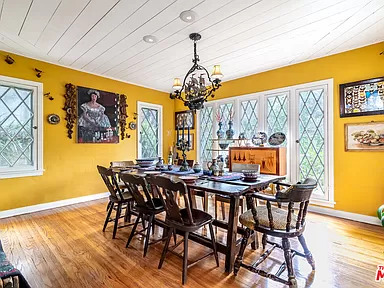
It has a large dining room with fairy tale cottage windows.

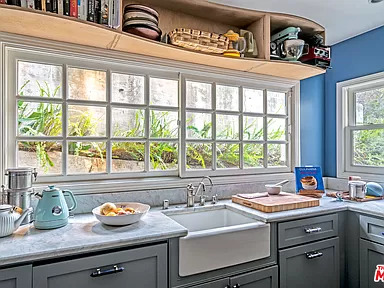
The kitchen is large, and look at the cute Dutch door. Love the floor.
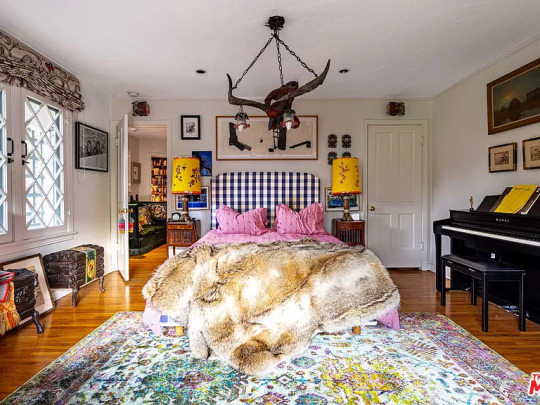
The primary bedroom is so cozy. It doesn't look big enough to fit a piano, but it's deceiving.


You don't see many red bathrooms. Very nice. I can't decide if I like the uneven tile look.

Cute alcove is a great place to read, but the small desk looks good in here.

Absolutely love the library. It reminds me of a treehouse.

Bedroom #2 is a child's room. It's pretty big, b/c it accommodates some large furniture pieces.

This bath is cool- burgundy subway tiles.
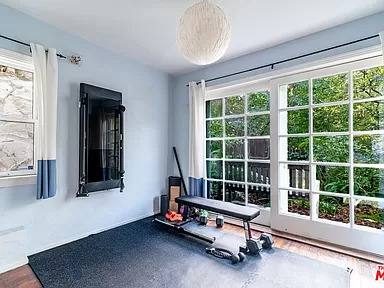
Bedroom #3 with large sliders to the garden, is being used for an exercise space.

The house has several Juliet balconies and a turret tower.

This is a lovely roof top deck.

The garden is so pretty.

Interesting waterfall and pond.
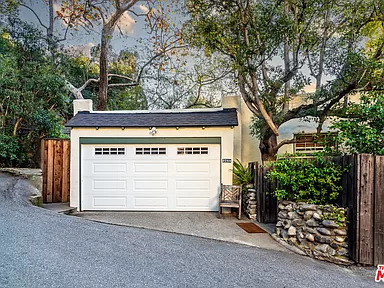
Not much of a driveway, but there's a double garage. The property is very angular and small, 5,299 sq ft lot, but it's in the expensive Hollywood Hills.
225 notes
·
View notes
Text
Asian slaves, indigenous Americans, and identity in colonial era Mexico
The Spanish Philippines had a diverse slave population for local labor and export, including Filipino Indians [i.e. natives; indios], Muslim war captives (moros), and foreign slaves from as far away as Portuguese India.
… Upon their arrival, chino slaves [i.e. any Asian slave, not just Chinese] were absorbed by the urban economy of Mexico City, where they mainly worked as domestic servants or in textile mills (obrajes) … For their part, working in the city provided chinos with some possibilities for manumission. Chinos in domestic service were especially apt to embrace the limited opportunities available to them and to experience some social mobility. In the obrajes, chinos had few of the freedoms given to domestic servants, but they did benefit from government oversight of the industry. During official visits, chino slaves appealed for protection from overt exploitation by claiming that they were Indians (even if they were from Portuguese India). Remarkably, visiting inspectors listened to their complaints, and they often responded by liberating individual chinos under the assumption that they were indeed native vassals and could thus not be held in bondage. The overall experience of chinos in the viceroyal capital confirms the benefits of living close to the center of colonial power.
The presence of free indigenous immigrants from the Spanish Philippines in Mexico reinforced the idea that all chinos were Indians. The complex governing structure of colonial Mexico involved two republics or political communities (the república de indios and the república de españoles); this organization separated the indigenous majority from everyone else to facilitate the collection of tribute and the ministry of the Catholic Church … [N]ative immigrants from the Philippines purposely sought to confirm their membership in the Republic because corporate status provided personal advantages. They asked to be tallied in tribute rolls in Mexico to benefit from concomitant privileges, such as trading rights and legal representation through the General Indian Court. At the same time, free Filipinos were frequently confused with chino slaves - a situation that had serious consequences for Filipinos' relations with colonial institutions and enslaved individuals. Some immigrants resented having their indigenous identity questioned and sought to maintain a sense of their Indian-ness by keeping their distance from chino slaves. The majority, however, expressed solidarity with chino slaves. Filipino artisans, for example, took on chino slaves as apprentices and taught them marketable skills. Similarly, Filipino traders incorporated chinos into their own credit networks to facilitate self-purchase.
Individual chinos who were manumitted also embraced an Indian identity, regardless of whether they were from Goa, Macau, or other places in South and Southeast Asia. In this way, chinos challenged official attempts to define them solely as former slaves. Instead, they sought to join the free republic. The possibility for this kind of social integration caused widespread concern among slave owners. To defend their property rights, masters started to brand chino slaves on the face, rather than on the chest or arm as they did with Africans, in order to dissuade them from fleeing and "passing" as free Indians. This horrifying development shows that Indian communities welcomed runaway chino slaves and, by extension, that slave owners sought visible markers of their slaves' status.
Excerpt from the Introduction to “Asian Slaves in Colonial Mexico: From Chinos to Indians” (2014) by Tatiana Seijas
115 notes
·
View notes
Text

Cartagena, Colombia: Cartagena is a port city on Colombia’s Caribbean coast. By the sea is the walled Old Town, founded in the 16th century, with squares, cobblestone streets and colorful colonial buildings. With a tropical climate, the city is also a popular beach destination. Reachable by boat are Isla de Barú, with white-sand beaches and palm trees, and the Islas del Rosario, known for their coral reefs. Wikipedia
#Cartagena#Colombia#Caribbean Coast Region#Caribbean sea#former Spanish colony#South America#South American Continent
108 notes
·
View notes
Text
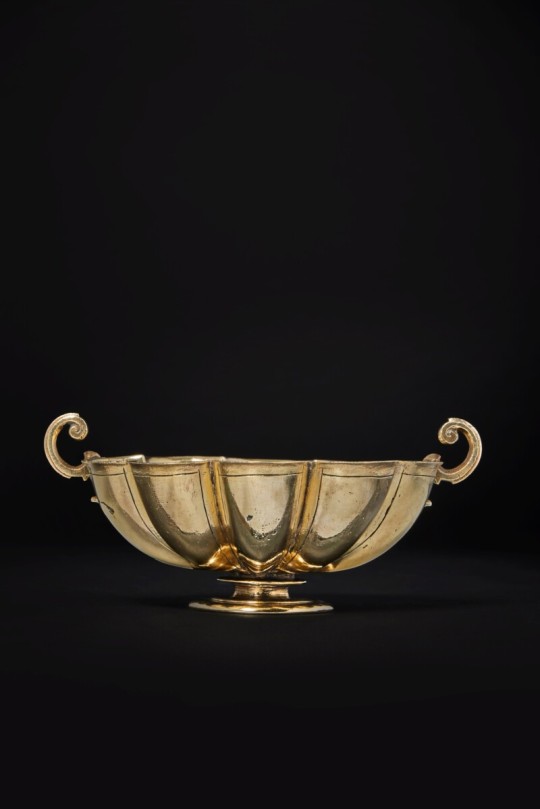
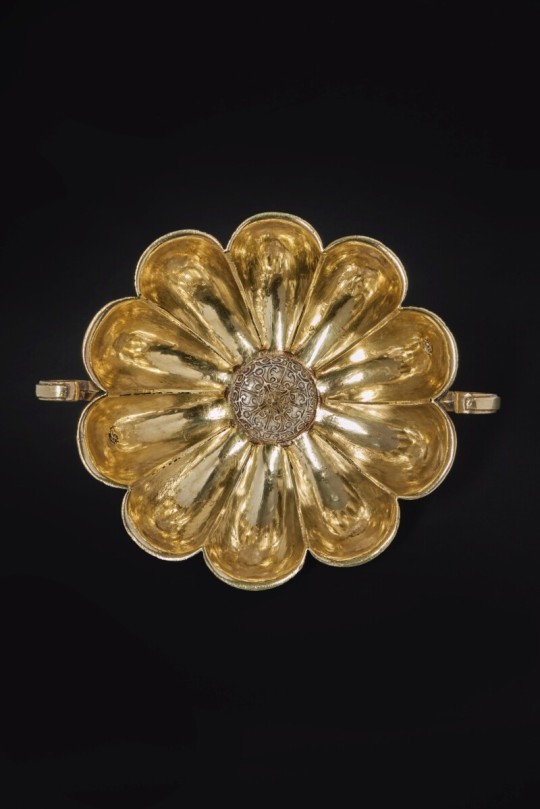
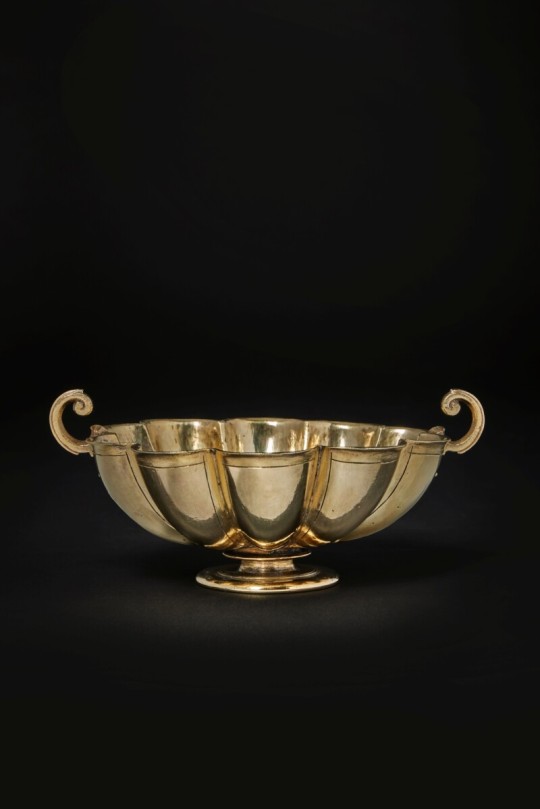
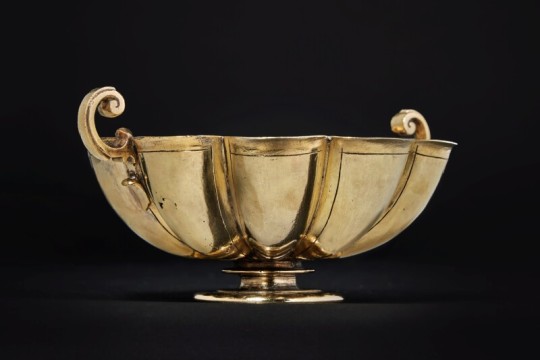
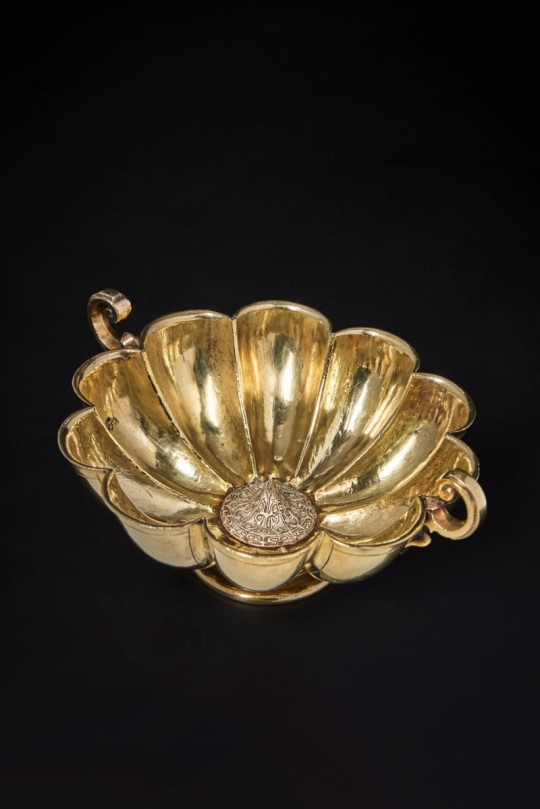
A Rare Spanish Colonial Silver-Gilt Two-Handled Cup from the Atocha Shipwreck Bogotá, Colombia, circa 1620
Nuestra Señora de Atocha was a Spanish treasure galleon and the most widely known vessel of a fleet of ships that sank in a hurricane off the Florida Keys in 1622. At the time of her sinking, Nuestra Señora de Atocha was heavily laden with copper, silver, gold, tobacco, gems, and indigo from Spanish ports at Cartagena and Porto Bello in New Granada (present-day Colombia and Panama, respectively) and Havana, bound for Spain. The Nuestra Señora de Atocha was named for the Basilica of Nuestra Señora de Atocha in Madrid, Spain. It was a heavily armed Spanish galleon that served as the almirante (rear guard) for the Spanish fleet. It would trail behind the other ships in the flota to prevent an attack from the rear.
Much of the wreck of Nuestra Señora de Atocha was famously recovered by an American commercial treasure hunting expedition in 1985. Following a lengthy court battle against the State of Florida, the finders were ultimately awarded sole ownership of the rights to the treasure.
#A Rare Spanish Colonial Silver-Gilt Two-Handled Cup from the Atocha Shipwreck#Bogotá Colombia#circa 1620#Atocha#Nuestra Señora de Atocha#Spanish treasure galleon#treasure#shipwreck#silver#ancient artifacts#archeology#archeolgst#history#history news#art#antique
71 notes
·
View notes